| Doop ( @ 2009-03-26 08:49:00 |
|
|
|||
|
|
|
|
|
|
|
| Entry tags: | char: adolf hitler, char: joseph stalin, group: communists, group: nazis, medium: webcomic |
Stalin vs. Hitler was written and illustrated by Alexey Lipatov. You can see the original Russian version, here. After someone translated the text into English, it was reformatted by Thomas Silbey. Finally, the lettering was redone by John Lunney.
For a lot of the panels Lipatov had annotations explaining some of the context, which I'll be also be posting.
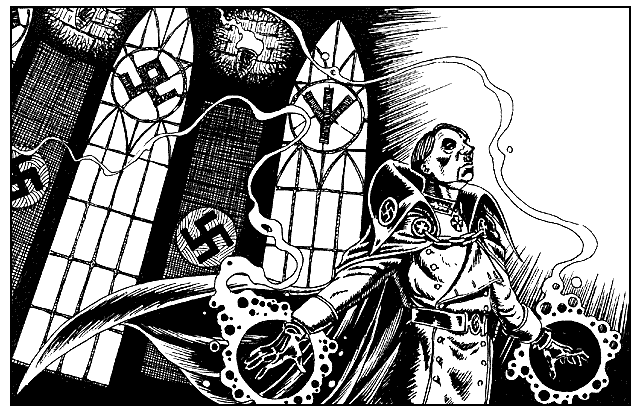
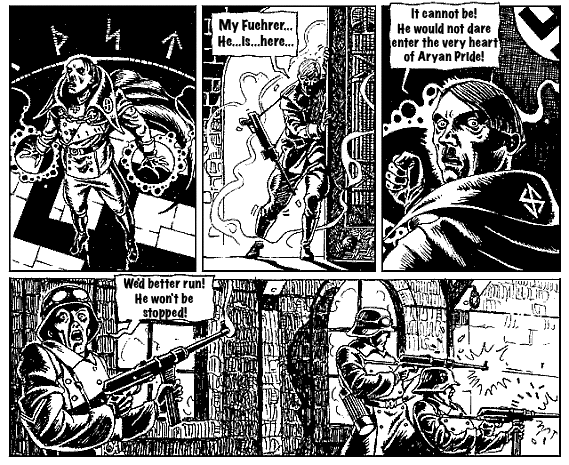
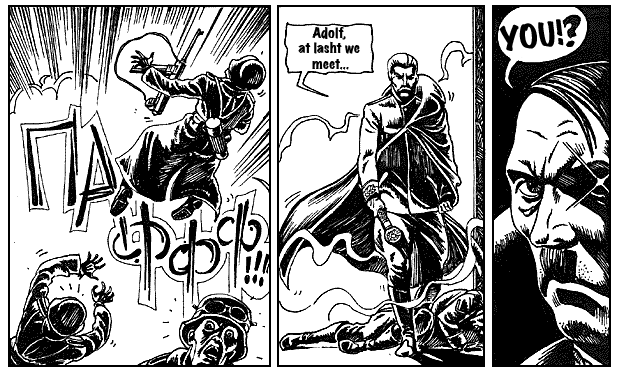
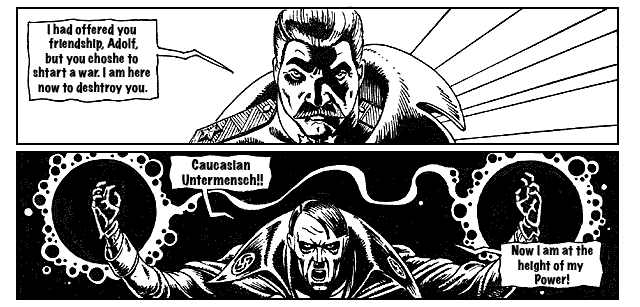
In August 1939, Stalin and Hitler signed a non-aggression treaty known as the Molotov-Ribbentrop Pact. It allowed Stalin to invade Finland and Poland.
In Russian, a Caucasian does not mean a white man. It means a man from the Caucasus Mountains, who Stalin actually was.
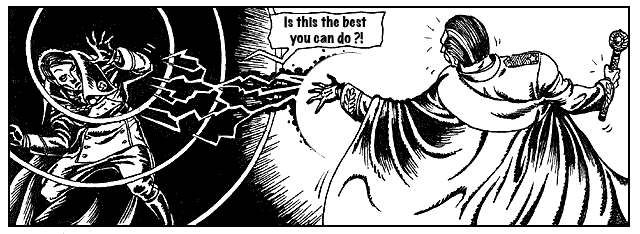
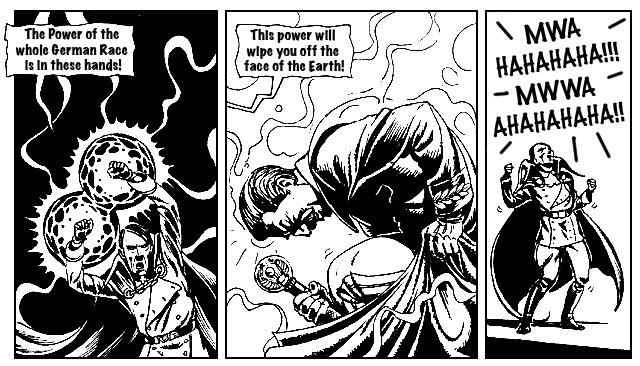
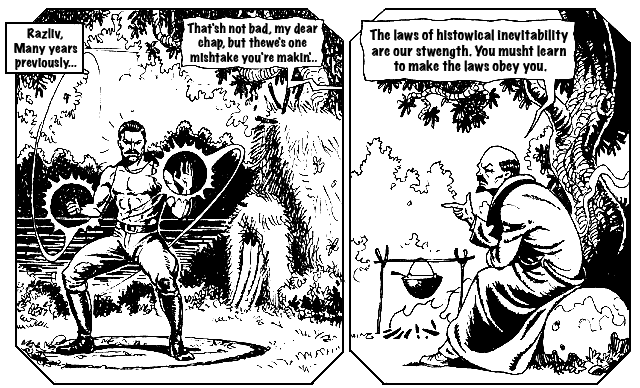
[Razliv is] a place north to St Petersburg. In July 1917 Vladimir Lenin were hiding here from officials in a hayloft, and wrote "The State and Revolution" considered to be one of his most important works.
Not unlike robot Walter, the Judge Dredd's servant, Lenin was not able to correctly pronounce "r" before vowels.
Presumption of historical inevitability is a corner stone of Marxism-Leninism.
The process of learning was extremely important for every member of the Party. Lenin used often to say: "To learn, to learn and to learn once again!"

Koba was the first Stalin's alias taken after the legendary Georgian outlaw. Party comrades could call him Koba.
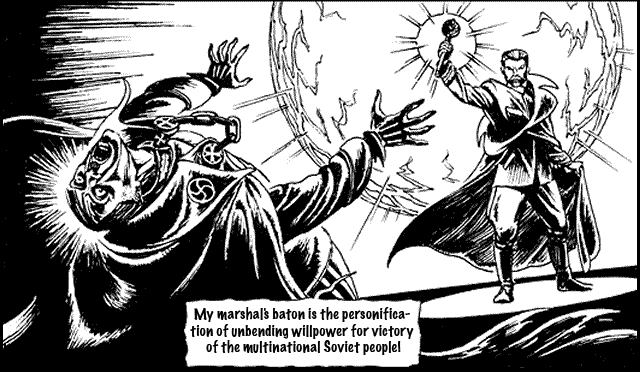
In 1943 Stalin was awarded the rank of marshal of the Soviet Union.
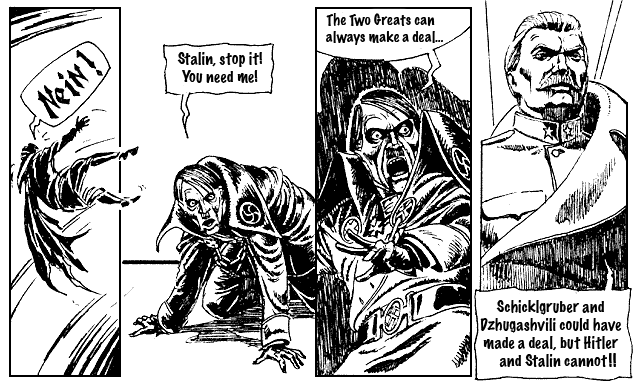
Schicklgruber was Hitler's original last name. Dzhugashvili was the original last name of Stalin.
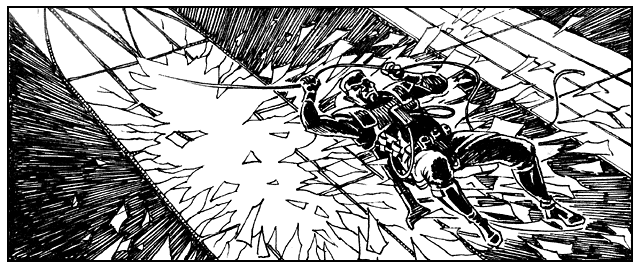
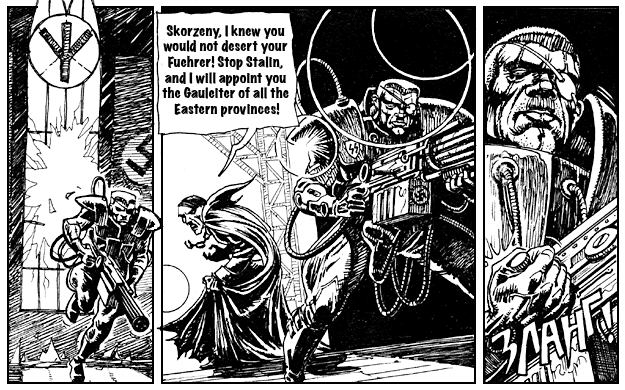
Otto Skorzeny -- a famous Waffen SS commander.
Gauleiters were head officials of districts under Nazi control.

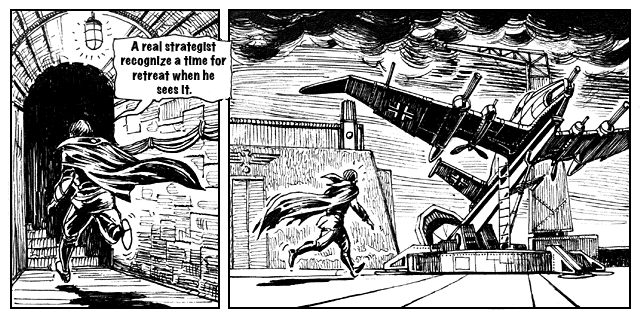
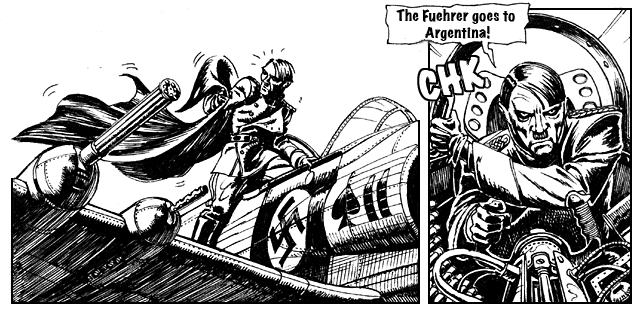
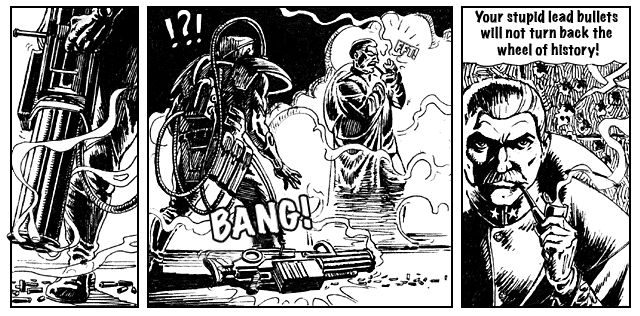
"The Wheel of History" was one of the favorite Stalin's metaphors (See, for example, his THE IMMEDIATE TASKS OF COMMUNISM IN GEORGIA AND TRANSCAUCASIA, Report to a General Meeting of the Tiflis Organization of the Communist Party of Georgia, July 6, 1921)

Otto Skorzeny made people believe he got his scars dueling during school days in Austria. Yet, there is a more probable theory on origin of those scars.
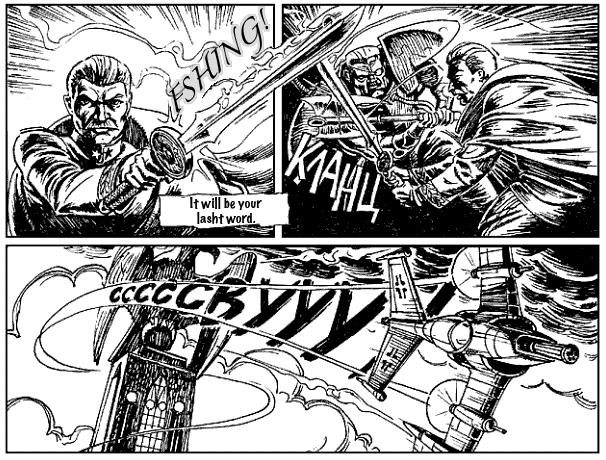
The alias "Stalin" means "Man of Steel."
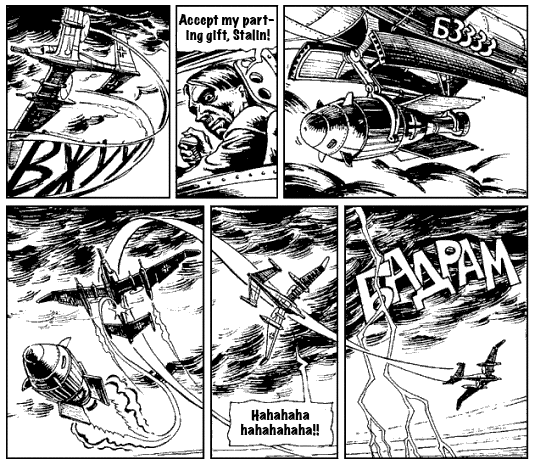
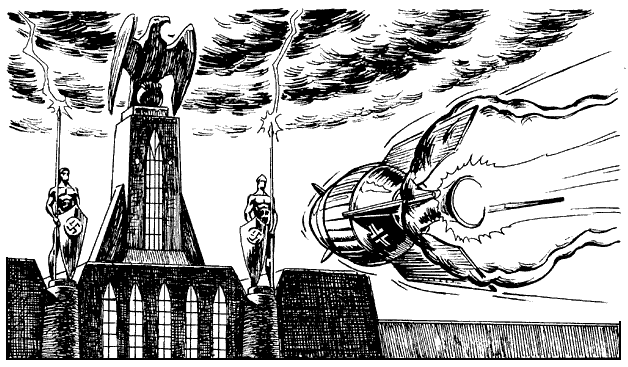
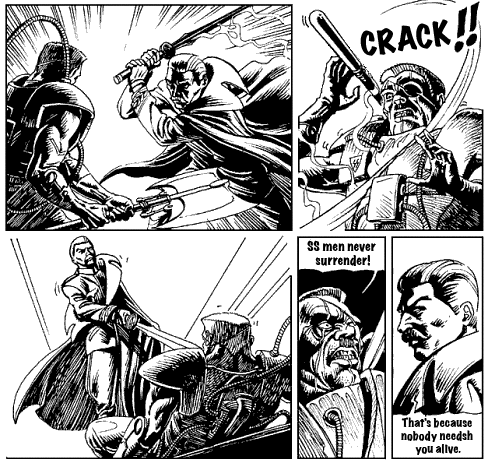
As well as soldiers in some of the Allied Armies, the Russian soldiers were instructed not to take Waffen SS men prisoners.
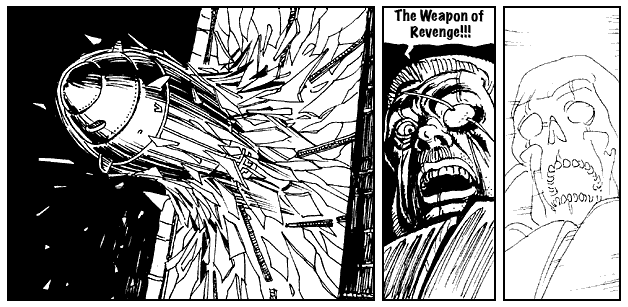
It is believed, Skorzeny refers to mysterious V-3 or V-4 missiles.
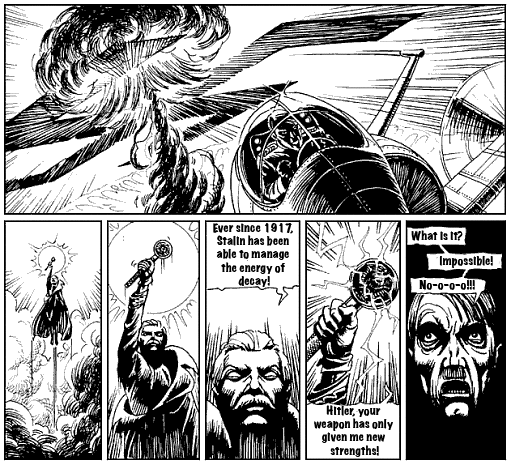
In his speeches, Stalin could refer to himself as the third person.
The Great October Revolution of 1917 put the country into decades of decay.
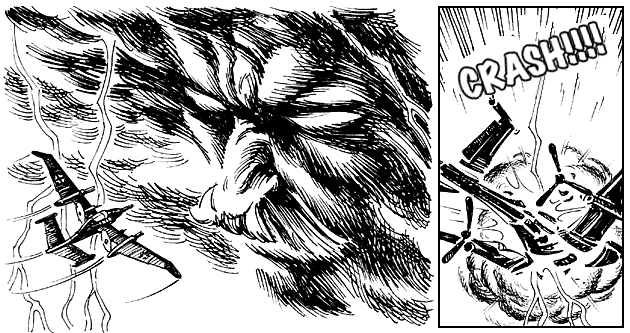
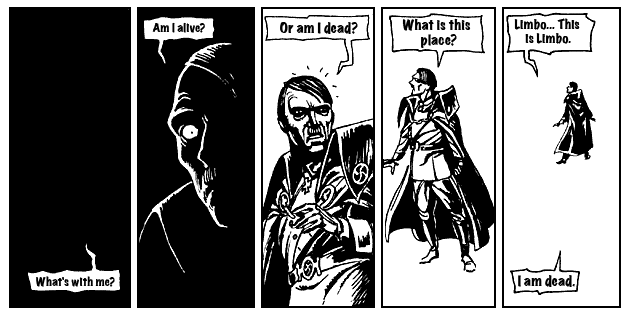
In the Norse Mythology, Limbo was a place between Heaven and Hell.
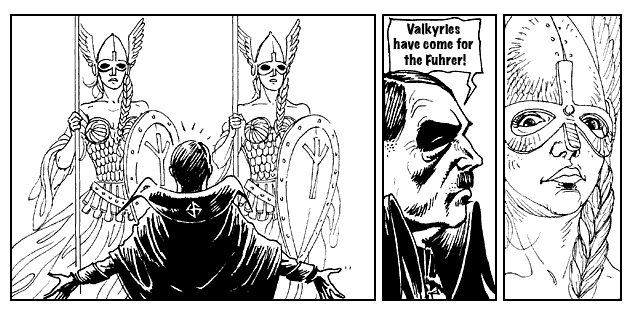
Valkyries escorted the brave warriors to Valhalla, the Norse Heaven.
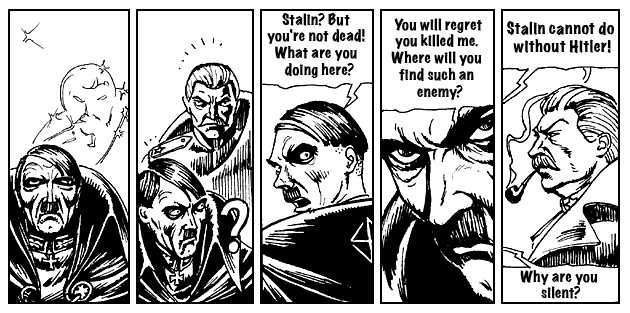
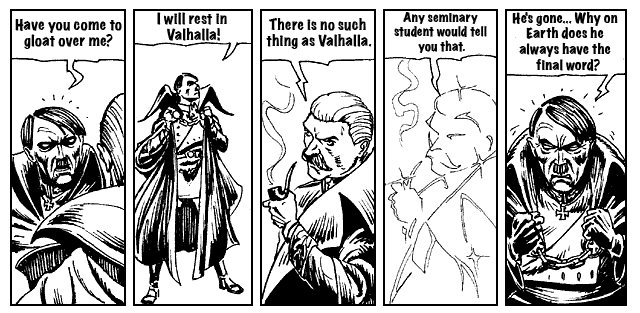
The Orthodox Church did not, and does not, appreciate pagan religions.
In 1884 - 1889 Stalin studied in Tiflis Orthodox Theological Seminary, but was expelled from it right before graduation.
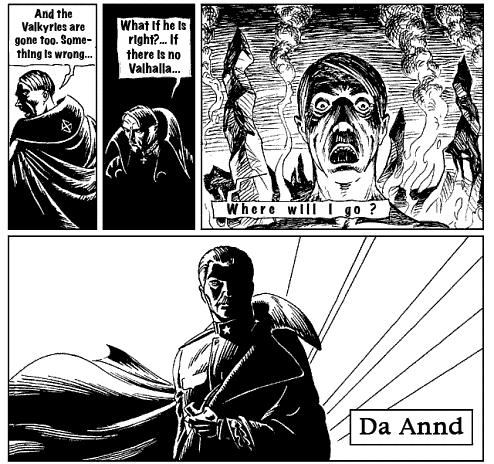
This is exactly how Stalin would have pronounced Lipatov's "The End" if he were speaking English…
For a lot of the panels Lipatov had annotations explaining some of the context, which I'll be also be posting.




In August 1939, Stalin and Hitler signed a non-aggression treaty known as the Molotov-Ribbentrop Pact. It allowed Stalin to invade Finland and Poland.
In Russian, a Caucasian does not mean a white man. It means a man from the Caucasus Mountains, who Stalin actually was.



[Razliv is] a place north to St Petersburg. In July 1917 Vladimir Lenin were hiding here from officials in a hayloft, and wrote "The State and Revolution" considered to be one of his most important works.
Not unlike robot Walter, the Judge Dredd's servant, Lenin was not able to correctly pronounce "r" before vowels.
Presumption of historical inevitability is a corner stone of Marxism-Leninism.
The process of learning was extremely important for every member of the Party. Lenin used often to say: "To learn, to learn and to learn once again!"

Koba was the first Stalin's alias taken after the legendary Georgian outlaw. Party comrades could call him Koba.

In 1943 Stalin was awarded the rank of marshal of the Soviet Union.

Schicklgruber was Hitler's original last name. Dzhugashvili was the original last name of Stalin.


Otto Skorzeny -- a famous Waffen SS commander.
Gauleiters were head officials of districts under Nazi control.




"The Wheel of History" was one of the favorite Stalin's metaphors (See, for example, his THE IMMEDIATE TASKS OF COMMUNISM IN GEORGIA AND TRANSCAUCASIA, Report to a General Meeting of the Tiflis Organization of the Communist Party of Georgia, July 6, 1921)

Otto Skorzeny made people believe he got his scars dueling during school days in Austria. Yet, there is a more probable theory on origin of those scars.

The alias "Stalin" means "Man of Steel."



As well as soldiers in some of the Allied Armies, the Russian soldiers were instructed not to take Waffen SS men prisoners.

It is believed, Skorzeny refers to mysterious V-3 or V-4 missiles.

In his speeches, Stalin could refer to himself as the third person.
The Great October Revolution of 1917 put the country into decades of decay.


In the Norse Mythology, Limbo was a place between Heaven and Hell.

Valkyries escorted the brave warriors to Valhalla, the Norse Heaven.


The Orthodox Church did not, and does not, appreciate pagan religions.
In 1884 - 1889 Stalin studied in Tiflis Orthodox Theological Seminary, but was expelled from it right before graduation.

This is exactly how Stalin would have pronounced Lipatov's "The End" if he were speaking English…

